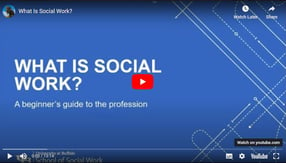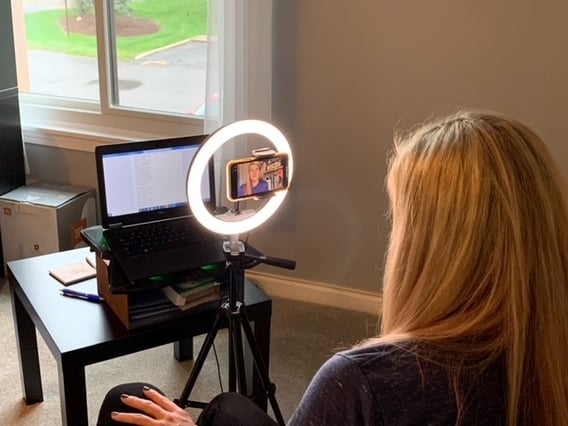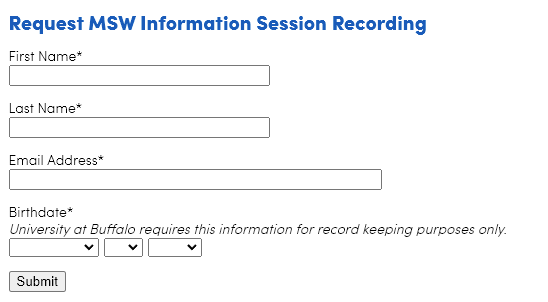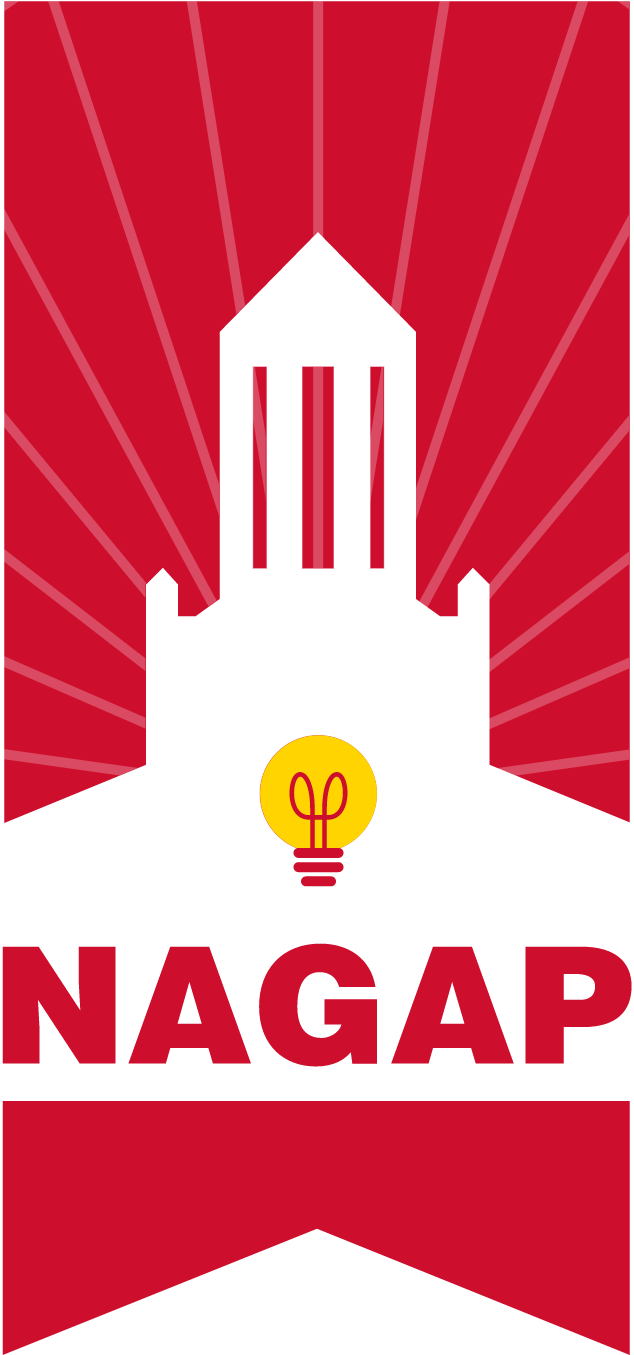Netflix. Hulu. Facebook. Instagram. Tik Tok. All those Snapchats your mom sends you. Think about how much video content you consume daily. If you’re like me, it can often be multiple hours a day.
Now think about how much time you spend reading articles, websites, newspapers, and books each day (work emails don’t count).
I’m guessing that it’s… less.
This isn’t surprising. According to Wyzowl (2021):
“When asked how they’d most like to learn about a product or service, 73% said they’d prefer to watch a short video. This compares to 11% who’d rather read a text-based article, website or post…”
Videos are engaging, entertaining, informative, and often easier to incorporate into our busy lives. It seems obvious that prospective students want information in that format as well, yet, many of us aren’t delivering. Perhaps you don’t know where to start. Maybe you think that you don’t have enough time or money to do video well. If that is the case, I can tell you right now, you’re wrong.
Videos do not have to be professionally produced to be valuable. If you have a phone with a camera, or a webcam, then you have everything you need to create engaging video content to help achieve your enrollment goals.
Here are three easy ways you can incorporate video into your recruitment strategy.
#1: Generating Awareness
What general questions can you answer that people interested in your program may be searching for? How can you be a thought leader within your discipline? Where do you see a gap in helpful resources?
By posting videos to YouTube (which is still the second most visited website in the world according to Similarweb, 2022), you can position yourselves as thought leaders in your discipline and provide a way for people who may not know that your school exists to discover you naturally.
How do you do this? By answering more general questions people are searching for (read: NOT about your specific program).
Some examples include:
- What do xyz professionals do
- Common misconceptions about xyz job
- How the licensure or certification process works for xyz professionals (if that applies to your field)
- Day in the life of an xyz professional
- How to know if xyz career or type of graduate program is right for you
- How to become an xyz professional

One example is our What is Social Work? video. With over 100,000 views, this 12-minute video explains the social work profession and who might be a good fit. It has the most views, likes, and comments of any of our videos. Why? Because it answers a question lots of people are searching for. Also, it is literally a zoom recording that we captioned and uploaded to YouTube. No fancy camerawork here!
#2: Clarifying Information
How much time do you or your staff spend answering the same questions over and over and over and over and over... you get it.
Despite our best efforts, some concepts are tricky for people to understand. And some things are just easier to explain verbally than in writing. (Also, remember that statistic above, people PREFER watching videos to reading.)
So, what if taking the time to record one short informational video could save you hours of repeating yourself? Well, I have good news for you, it can!
Record a brief video answering a frequently asked question or explaining a difficult concept, upload it to YouTube, and if possible, embed it on a relevant section of your website. This will serve several purposes:
- You will be providing valuable information in a different format.
- You can refer students to the video instead of having to constantly repeat yourself.
- Having videos on your webpage increases SEO.
- Showing a friendly face starts building relationships and lets prospective students know you want to help.
One example of this is my “application essay tips” video. This video not only presents the required questions, but I give a more detailed explanation of what we are looking for and some tips for writing an effective essay. It is embedded right on our essay requirements page.
Here is a behind-the-scenes look at how I filmed my informational talking head videos like the one above (but zoom works just as well!):

#3: Lead Generation
So, generating awareness and providing good customer service is important and supports your enrollment goals, but at the end of the day we need actual inquiries, applications, and butts-in-seats. Cue gated content.
According to HubSpot (2020):
“Gated content is any type of content that viewers can only access after exchanging their information. Essentially, the content is hidden behind a form.”
Long form videos are perfect pieces of content to put behind a form to capture otherwise anonymous website traffic. One example that you can implement right now are information session recordings. Most of us are already recording webinars or virtual information sessions. Here’s how to get them to work for you!
Step 1: Upload those recordings to YouTube as unlisted videos (meaning you need the direct link to view them).
Step 2: Make sure the videos are captioned. This is key for accessibility. (We use rev.com for affordable captioning services).
Step 3: Create a simple form in your CRM (we use Slate) so people can request the recording in exchange for their contact information.
Step 4: Set up the automated communications in your CRM so that when someone completes the form, they get an email with the link to the unlisted YouTube video. (This is also the step where you can use hidden form fields or other workflows to add them to your other inquiry communication plans- this is how you nurture these leads into applicants!)
Step 5: Embed that request form on your website wherever it makes sense (ours is at the bottom of the MSW program page).

There are several reasons why this is such an effective technique to generate leads (and ultimately, applicants and enrolled students):
- First, these people are already showing some level of interest by being on your website. Give them a way to identify themselves to you.
- Second, instead of throwing out a vague call-to-action (like “learn more” or “request information”), this offers a specific deliverable in exchange for their contact information. People are more willing to give out their information if they know exactly what type of content they will receive in return.
- Lastly, people are used to accessing high quality content “on-demand,” and this strategy meets those expectations. The information also becomes readily accessible for those who may not be able to attend a live session.
Some final words of encouragement
Video can feel really overwhelming, I get it. But if I can do this, you can too. The more often you incorporate video into your recruitment strategy, the easier and faster it will get. As I’ve shown above, you are most likely already doing things that you can easily turn into videos that help you meet your enrollment goals.
To help get you started, I’ve put together a video resource guide, which you can check out here.
Get creative and have fun with it!
Hear more about this topic from Lauren on episode four of season six of The NAGAP Report, the official NAGAP podcast.
References
Bump, P. (2022, February). The best social media platforms for video content in 2022 [consumer data]. Hubspot. https://blog.hubspot.com/marketing/go-to-social-media-video-platforms
Riserbato, R. (2020, July). Gated content: what marketers need to know. Hubspot. https://blog.hubspot.com/marketing/ungated-content-free
(2021). Video marketing statistics 2022. Wyzowl. https://www.wyzowl.com/video-marketing-statistics/
(2022, March). Top websites ranking. Similarweb. https://www.similarweb.com/top-websites/
(2021). Not another state of marketing report 2021. Hubspot. https://www.hubspot.com/state-of-marketing








